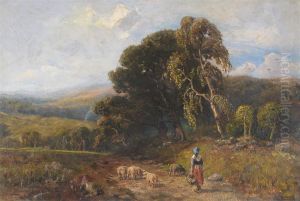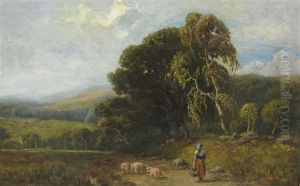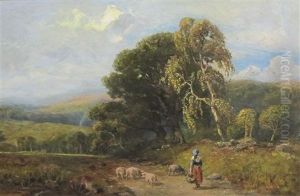Henry Eugene Compton Paintings
Henry Eugene Compton was a British artist born in 1861, who made a significant mark in the art world with his unique style and contributions, particularly in the realm of watercolor painting. Despite not being as widely recognized today as some of his contemporaries, Compton's work during his lifetime was well-regarded, especially for its detailed and delicate portrayal of nature and landscapes. He was part of a generation of artists who were exploring new techniques and expressions in art, at a time when the world was undergoing rapid changes due to the Industrial Revolution and the onset of modernism.
Compton's artistic journey was marked by a deep appreciation for the natural world, which is evident in the majority of his works. He had an exceptional ability to capture the subtle nuances of light and shade, which brought his landscapes and botanical illustrations to life. His dedication to realism and accuracy in depicting flora made his work valuable not only to art lovers but also to botanists and natural historians. Throughout his career, Compton exhibited at various prestigious galleries, including the Royal Academy and the Royal Watercolour Society, gaining respect and admiration from his peers.
Despite his success, detailed accounts of Compton's personal life and artistic development are somewhat scarce, and he remains a somewhat enigmatic figure in the history of British art. After his death in 1946, Compton's legacy continued through his works, which are held in several collections and museums, offering insights into his meticulous technique and his passion for capturing the beauty of the natural world. His contribution to the arts, particularly in the field of watercolor painting, is a testament to his skill and dedication as an artist.


